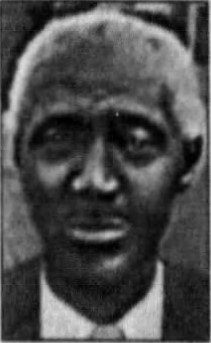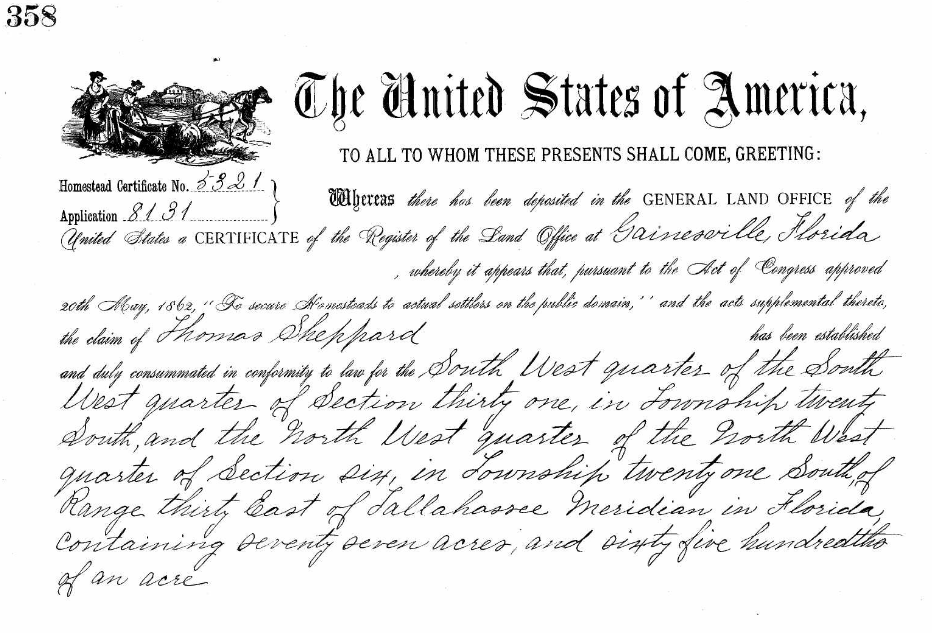

Longwood’s founder, Edward Warren Henck, recruited workers from Georgia and South Carolina to move to Central Florida to help construct his South Florida Railroad. This was the first rail line through Orange and Seminole County, running from Sanford to Orlando via Longwood.
Thomas Shepherd heeded that call in 1879. Shepherd, born a Georgia slave in 1849, became the patriarch of one of the most prominent black pioneer families in Longwood. He aspired to do much more than laboring on railroads; he wanted to own his land.
Since he did not know how to read, Shepherd paid Henck $1.50 to help him fill out the paperwork to apply for a land grant under the Homestead Act. The application process had strict requirements, including that the land be settled and improved as farmland for a minimum of five years and that witnesses attest to this.
In 1890, Shepherd was granted 77 acres spanned both sides of State Road 434 in Longwood, east of Rangeline Road. On the land grant, his last name is “Sheppard,” but the correct spelling is “Shepherd.”
Once he was settled in Longwood, he brought the rest of his family, including his father (Nathan Shepherd), sister (Millie Shepherd), brother-in-law (Henry Peterson), and his brother (Peter Shepherd). Peter became the first pastor at the Corinth Baptist Church, now known as Mt. Olive Missionary Baptist. One of Shepherd’s daughters married George Jones, another pioneer black family in Longwood.
Thomas was a skilled piano player. In his later years, he lived with the family of Fredrick Rand and helped care for their homes in Longwood and Orlando. Rand was a fellow Longwood pioneer and one of the railroad directors.
Shepherd lived out a long life in Longwood. He passed away at 101 years old!
His descendants continued to prosper on the land for many decades. The church he founded still worships on 434, not far from the former Shepherd homestead.
Family’s roots firmly planted in Longwood land (Orlando Sentinel, June 3, 2001)




